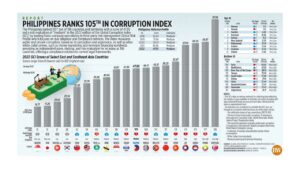Bad air quality in Asia causing spike in asthma

By Brontë H. Lacsamana, Reporter
AIR POLLUTION and climate change, interlinked causes of allergic diseases and deaths around the world, are health crises that require immediate action, according to experts from the Asia Pacific Association of Allergy, Asthma and Clinical Immunology (APAAACI).
“The most hazardous air pollution is in Asia, where we’ve seen rising asthma rates due to changes in ozone,” said Shazia Z. Rafi, president and convenor of an international air quality advocacy group AirQualityAsia, at a recent APAAACI webinar on the impact of climate change on allergic diseases.
“The right to clean air is our first human right, that first gulp of air we take when we are born,” she added.
A good way to ensure better air quality is measuring it — the Air Quality Index (AQI), for example, can do so in real-time from both ground level and satellite-based monitors.
In the Asia Pacific, around 2.3 billion people are exposed to levels of nitrogen dioxide several times higher than the annual mean of 10 µg/m3, a guideline value set by the World Health Organization (WHO) for assessing outdoor air pollution (nitrogen dioxide is a byproduct of combustion processes).
This data point should be correlated with updated data on emergency visits for asthma and pulmonary disease as well as number of deaths, said Ms. Rafi.
In 2021, the WHO released a fact sheet that said 4.2 million people die prematurely every year due to outdoor pollution, the majority of which are from Asia and Africa.
Meanwhile, an air quality study published by the WHO in 2018 said that there are 45.3 air pollution-related deaths for every 100,000 Filipinos.
Such data shows policymakers that air quality is something that tangibly affects people’s lives and welfare, according to Antique Rep. Lorna Regina “Loren” B. Legarda, an advocate of mitigating air pollution and climate change in the Philippines.
“When we implement policies and measures to improve air quality, we get two for one because we advance both climate and health goals at once,” she said.
The Philippine Clean Air Act of 1999 and the Renewable Energy Act of 2008, both of which were authored and supported by Ms. Legarda, are among the laws that were put in place for environmental governance in the country.
Studies about the effects of climate change on allergens in the environment must also be brought to light to highlight the severity of the issue, said Dr. Jae-Won Oh of the pediatrics department of Hanyang University’s College of Medicine in Seoul.
“When put under elevated carbon dioxide levels expected to occur due to climate change, oak, and ragweed produce significantly higher amounts of pollen,” he said, citing a 2021 study on the increased sensitization to pollen in allergic children in Seoul.
Dr. Oh added that the ongoing increase in temperature may contribute to extended seasonal duration — a pattern expected to continue due to changing climate.




